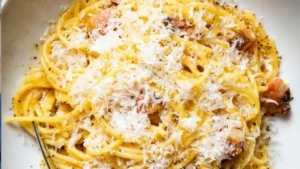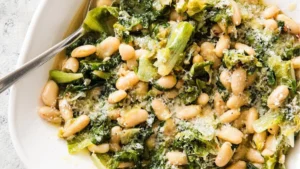Introduction
Beans and greens, also known as Scarole e Fagioli in Italian, is a classic dish that originated in Pittsburgh. This simple recipe has been passed down through generations and remains popular today due to its affordability, health benefits, and mouthwatering flavors. In this blog, we will explore the history of this dish, the ingredients used, and a step-by-step guide on how to make it. Get ready to tantalize your taste buds with this traditional Pittsburgh favorite!
A Pittsburgh Classic Born out of Necessity
The roots of beans and greens can be traced back to the 19th century when many people from southern Italy migrated to Pittsburgh in search of employment in the thriving steel industry. With limited resources, these immigrants had to make do with what they had, resulting in the creation of this simple yet hearty dish.
The Versatility of Beans and Greens
While the traditional recipe calls for escarole, beans and greens can be made with a variety of greens such as broccoli rabe and spinach. The choice of greens adds a unique twist to the dish, allowing you to customize it to your liking. Whether you prefer a slightly bitter taste or a milder flavor, beans and greens can be prepared to suit your palate.
Building the Aromatic Base
To enhance the flavors of beans and greens, it is essential to start by creating an aromatic base. This is achieved by sautéing onions, garlic, and a combination of spices and herbs. While some recipes may incorporate additional ingredients like tomatoes, sausage, or meat, the authentic Pittsburgh style keeps it simple, allowing the flavors of the greens and beans to shine.
The Importance of Prepping the Greens
When cooking with greens, it is crucial to properly prep them to ensure they are clean and free from any dirt or sediment. In the case of escarole, it is recommended to cut out the core and wash the leaves thoroughly. This step ensures that the greens are fresh and ready to be added to the dish.
Braising the Greens and Infusing Flavors
Once the aromatic base is ready, it’s time to add the greens and let them wilt down. This process helps to soften the greens and reduce any bitterness they may possess. The greens are braised in a savory mixture of chicken broth and spices, allowing them to absorb the flavors and become tender. The timing is crucial here, as the greens should be wilted but not mushy.
Adding Cannellini Beans for Texture and Taste
After the greens have wilted, it’s time to introduce cannellini beans to the dish. These creamy white beans are rinsed and drained before being added to the pot. They are left to simmer uncovered, allowing them to soak up the flavors of the greens and the aromatic base. The combination of beans and greens creates a hearty and satisfying texture.
Finishing Touches: Parmesan and Olive Oil
To elevate the flavors of beans and greens, it is customary to add grated Parmesan cheese just before serving. The Parmesan not only adds a rich and creamy texture but also enhances the overall taste of the dish. A drizzle of extra virgin olive oil adds a final touch of indulgence, bringing out the fruity flavors and complementing the other ingredients.
Enjoying Beans and Greens
Beans and greens can be enjoyed in various ways. It can be served as a main course, accompanied by crusty bread or grilled bread for a complete meal. Alternatively, it can be served as a side dish, adding a burst of flavor and nutrition to any plate. This versatile dish is perfect for both casual weeknight dinners and special occasions.
Conclusion
Beans and greens, a Pittsburgh classic, is a testament to the ingenuity and resourcefulness of Italian immigrants who made their mark on the city. This simple yet satisfying dish continues to be a beloved favorite due to its affordability, health benefits, and incredible flavors. Whether you’re a fan of escarole or prefer a different green, beans and greens can be adapted to suit your taste. So why not give this traditional recipe a try and savor the taste of Pittsburgh history?









